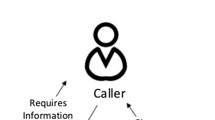Abstract
Transmission of in-ambulance data without inconveniencing or undue effort by the rescue crew—in other words, automation of in-ambulance activities (measurement/analysis, activity recording, message transmission)—is essential in implementing uniform medical control standards across the nation. However, the 3G mobile phone has propagation problems at urban area and severe congestions after major disaster to support mobile telemedicine. So we are expecting the Quasi-zenith satellite with nationwide coverage. In near future, we are expecting the data transmission of image of pharygoscopy, motion picture of light reflex, 12-leads ECG, automated ultrasonic echo and vital signs from ambulances to triage center. For example, Thrombolytic agents are reportedly effective even when injected into a vein, if injected in the early stages of acute myocardial infarction, that will reduce medical costs, resulting in high-quality services available uniformly across the nation. This paper describes our basic concept to support ambulatory application.


Similar content being viewed by others
References
Curry, G. R., and Harrop, N., The Lancashire telemedicine ambulance. J. Telemed. Telecare. 4 (4)231–238, 1998.
Pavlopoulos, S., Kyriacou, E., and Berler, A., A novel emergency telemedicine system based on wireless communication technology—AMBULANCE. IEEE T. Inf. Technol B. 2 (4)261–267, 1998.
Istepanian, R., Jovanov, E., and Zhang, Y., Guest editorial introduction to the special section on m-health: beyond seamless mobility and global wireless health-care connectivity. IEEE T. Inf. Technol B. 8 (4)405–414, 2004.
Lee, K., Kim, Y., and Hwang, S., Effect of telemedicine for a prehospital suburban emergency medical service. Crit. Care. 12 (Suppl 2)341, 2008.
Nakajima, I., Yagi, Y., Juzoji, H., et al., Highly inclined elliptical orbiter for motion picture transmission from ambulance. Conference proceedings of WPMC2001, pp. 1585–1590.
NTT Group, Disaster countermeser by NTT Group. http://www.aptsec.org/meetings/2005/apg07-2/APT_ITU_DIS2005/(10)NTTE-1.pdf.
Kagami, K., Juzoji, H., et al., In search of effective telecommunication tools for telemedicine in the aftermath of disasters, eHEALTH INTERNATIONAL Journal. http://www.ehealthinternational.org/vol2num1/Vol2Num1p31.pdf.
Nakajima, I., Yagi, Y., and Zhao, Y., Cost comparison between HEO satellites and 3G wireless mobile phones for video transmission from ambulances, Conference proceedings of WPMC2001, pp. 1573–1578.
Jossif, A., Pattichis, C., and Kyriakides, M., Selected eHealth applications in Cyprus from the training perspective. http://www.cs.ucy.ac.cy/networksgroup/pubs/published/2007/Jossif_MIM2007.pdf.
Subekti, A., Usman, K., et al., A study of NVIS for communication in emergency and disaster medicine, APAMI 2003. http://kosmi.snubi.org/2003_fall/APAMI_CJKMI/O7-4-036-Subekti-0731.pdf.
Graschew, G., Roelofs, T., Rakowsky, S., et al., Disaster emergency medicine supported by virtualization of hospitals. J. of eHealth Tech. Appli. 6 (2)88–90, 2008.
Natenzon, M., Complex telemedicine system of Disasters medicine survey for the relief actions in a course of elimination of emergency situation consequences. J. of eHealth Tech. Appli. 6 (2)109–112, 2008.
Nakajima, I., Juzoji, H., Kitano, T., et al., Research and development for on-board light reflex pupillometor for emergency vehicle. J. of eHealth Tech. Appli. 7 (1)57–59, 2009.
Kinney, J., Puntel, R., and Sahn, D., Telemedicine based ultrasound for detecting neonatal heart disease in babies at remote military or native American health care facilities. A762784. http://www.stormingmedia.us/76/7627/A762784.html.
International Telecommunication Union, Telecommunication Development Bureau, and ITU-D Study Group 2, Question 14-1/2: Application of telecommunications in health care, technical information—a mobile medical image transmission system in Japan, PocketMIMAS. Rapporteurs Meeting Q14-1/2 Japan, 2004.
Tokai university school of medicine, Report of a development of ICT toolkits to assist EMT’s triage after major disaster. Website of the Asia Pacific Telecommunity: http://www.aptsec.org/Program/ICT/WebHRDICT/Batch-7/Japan.pdf.
Author information
Authors and Affiliations
Corresponding author
Rights and permissions
About this article
Cite this article
Nakajima, I. Japanese Telemedical Concept of Ambulatory Application. J Med Syst 35, 215–220 (2011). https://doi.org/10.1007/s10916-009-9358-6
Received:
Accepted:
Published:
Issue Date:
DOI: https://doi.org/10.1007/s10916-009-9358-6




